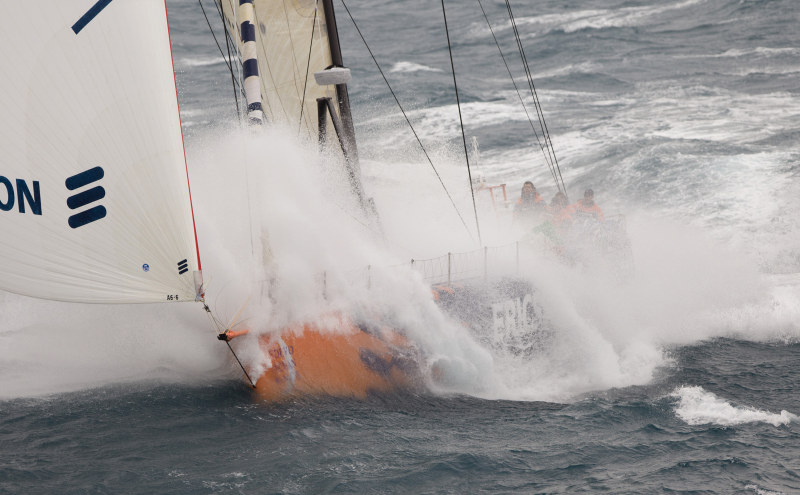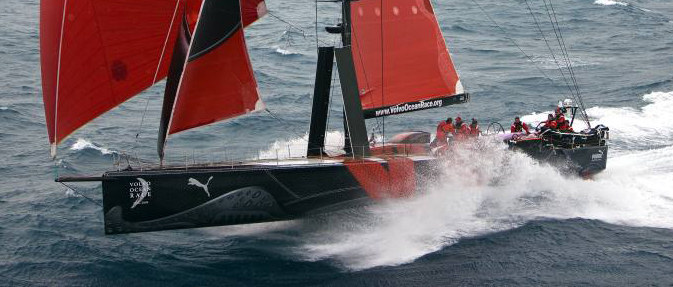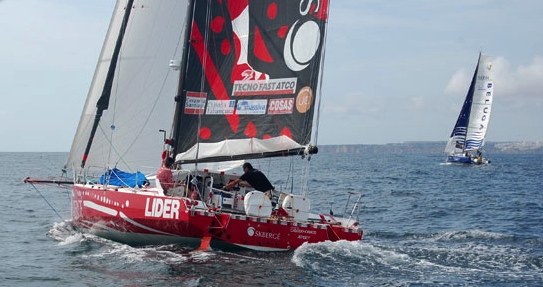
Round the World Races Start

As the days grow colder and sailboat racing goes into hibernation across most of America, two events blasted off the launching pads this past weekend that should warm the cockles of online sailors everywhere: the 2008-2009 Volvo Ocean Race, and the Portimao Global Ocean Race.

The Volvo is well known to most sailors as the pinnacle of crewed round-the-world competition. Begun in 1973 with a diverse fleet of small boats and maxis, this every-three-years event is today sailed in Volvo 70s, perhaps the fastest and most exciting craft of their size ever built. Just slightly shorter than an America’s Cup boat, the V70s make the Cup boats look like army trucks with four flat tires.
This year, only seven V70s answered the starting gun off Alicante, Spain, on Saturday. This smallest-ever fleet includes two boats each from Sweden (Ericsson 3 and Ericsson 4) and Spain (Telefonica Blue and Telefonica Black), and one each from Germany (Puma), Russia (Team Russia), Netherlands (Delta Lloyd) and an Irish-Chinese collaboration (Green Dragon). There are no American entries this time. The team closest to being one is Puma, which was built at Goetz in Boston and is skippered by America’s Cup and Volvo veteran Ken Read. The Bay Area is ably represented by Kimo Worthington, who runs Puma‘s shore team.
The fleet started in brisk breeze and within a few hours, boats were doing speed bursts to 30 knots. That was followed by breeze so light near Gibraltar that, noted one report, "the boats were wallowing around like T-Rexes in a tar pit." Ericsson 4 — the Torben Grael-skippered boat favored to win — achieved the first pyschological victory by being the first boat past Gibraltar, followed closely by Puma, T-Black, Dragon and Ericsson 3. Bouwe Bekking’s Telefonica Blue was the first casualty, with her steering failing only 20 miles into the race. She returned to port for repairs and has now rejoined the fray.
The first leg takes the fleet 6,500 miles to Cape Town. That’s about the only similarity between this Volvo Race and the last one. The other six ports — Cochin (India), Singapore, Qingdao (China), Rio de Janeiro, Boston, Galway (Ireland), Goteborg/Marstrand (Sweden), Stockholm and finish in St. Petersburg, Russia — are all new stops. And several require a fair amount of windward work to get there, which was just one of many considerations in the ‘Volvo 2.0’ design. The new boats are lighter, faster and — one would hope — safer than the failure-prone 70s of the last race. For more on this event, log onto www.volvooceanrace.org.

A day after the Volvo start and 450 miles to the west, the inaugural Portimao Global Ocean Race got underway in Portugal. Conceived by round the world racers Josh Hall and Brian Hancock, this event is for single- or doublehanded 40-footers. Intended as an ‘affordable’ alternative to high-dollar events like the Vendée Globe, the race attracted six boats, two solo and four doublehanded. They hail from Germany, Great Britain, Belgium, the Netherlands, South Africa and Chile. The first of five stops in this event is also Cape Town. Few of the skippers are well known. But we have a feeling that will change. For more on this new event, check out the excellent website at www.portimaorace.com.
And if all that isn’t enough to keep you sailing the armchair well into the evenings, the true Everest of sailing, the Vendée Globe, starts next month and 30 — that’s no typo — sailors are signed up to start, including American Rich Wilson. To join the countdown, visit www.vendeeglobe.org/en.
